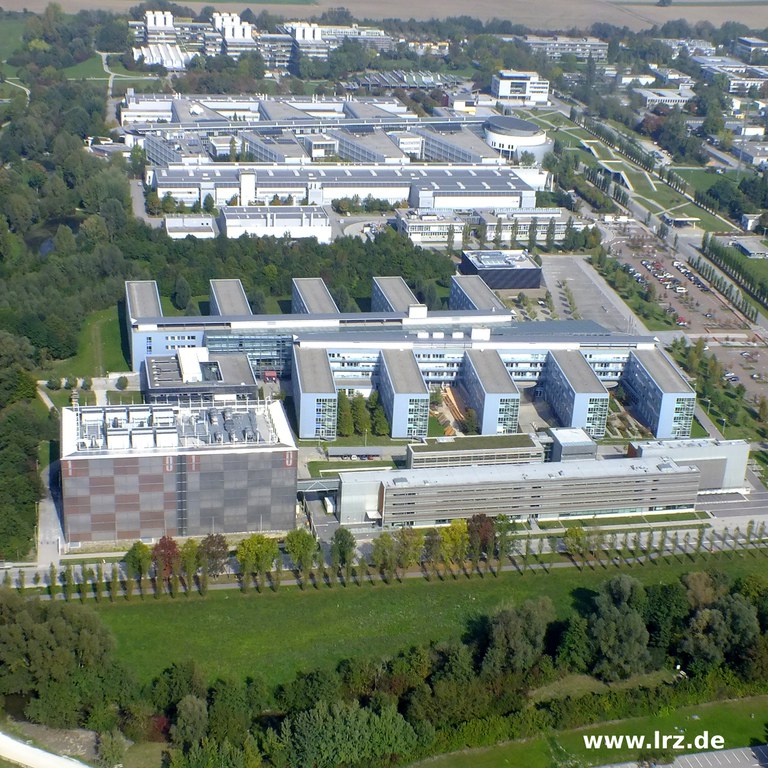Leibniz Supercomputing Centre (LRZ)
Contact:
Leibniz-Rechenzentrum
der Bayerischen Akademie der Wissenschaften
Boltzmannstraße 1
85748 Garching
Map: OpenStreetMap
Phone: (089) 35831 8000
Homepage: LRZ
User's Office
Opening hours:
Monday – Thursday: 7.30 am - 5.30 pm
Friday: 7.30 am - 4.30 pm

LRZ
The Leibniz Supercomputing Centre (Leibniz-Rechenzentrum, LRZ) of the Bavarian Academy of Sciences and Humanities is the IT Service Provider for the Munich universities and colleges as well as a growing number of research organisations in Munich and throughout Bavaria. In addition to this regional focus, the LRZ also plays an important role as a supercomputing centre on the national as well as the European stage. The LRZ was founded in 1962 in Munich and is now located on the Research Campus in Garching.
SuperMUC
The LRZ has been operating world-class supercomputers for decades. The current supercomputer, the SuperMUC (Phases 1 and 2), is one of the most powerful computers in the world. With a peak performance of 6.8 Petaflops (almost 7 quadrillion operations per second), 500 Terabyte main memory, 20 Petabyte external data storage, and a high speed interconnect, the SuperMUC provides first-class information technology for researchers in the fields of e.g. physics, chemistry, life sciences, geography, climate research, and engineering. Throughout the entire computing process, the LRZ focuses closely on supporting our users so they can take optimal advantage of all the resources we have to offer. Last but certainly not least, the SuperMUC’s innovative warm-water cooling system makes it one of the most energy efficient supercomputers worldwide.
Visualisation Centre
The V2C at the LRZ offers the most up-to-date technology for visualising scientific data. This
technology allows for a more rapid advancement and significant enrichment of scientific knowledge.
The ability for scientists to understand their data and discover interconnections therein is vastly improved by
the three dimensional, high-resolution data projection on the Powerwall, by the use of the five-sided projection installation, and by the interactive navigation possible in the V2C. Scientists are even able to make
breakthroughs in understanding by using this virtual and interactive visualisation technology. In addition to
being used in the natural sciences and in technology, results in humanities and social science research are also visualised using the V2C, for instance in the fields of arts and multimedia, archaeology, and psychology.
